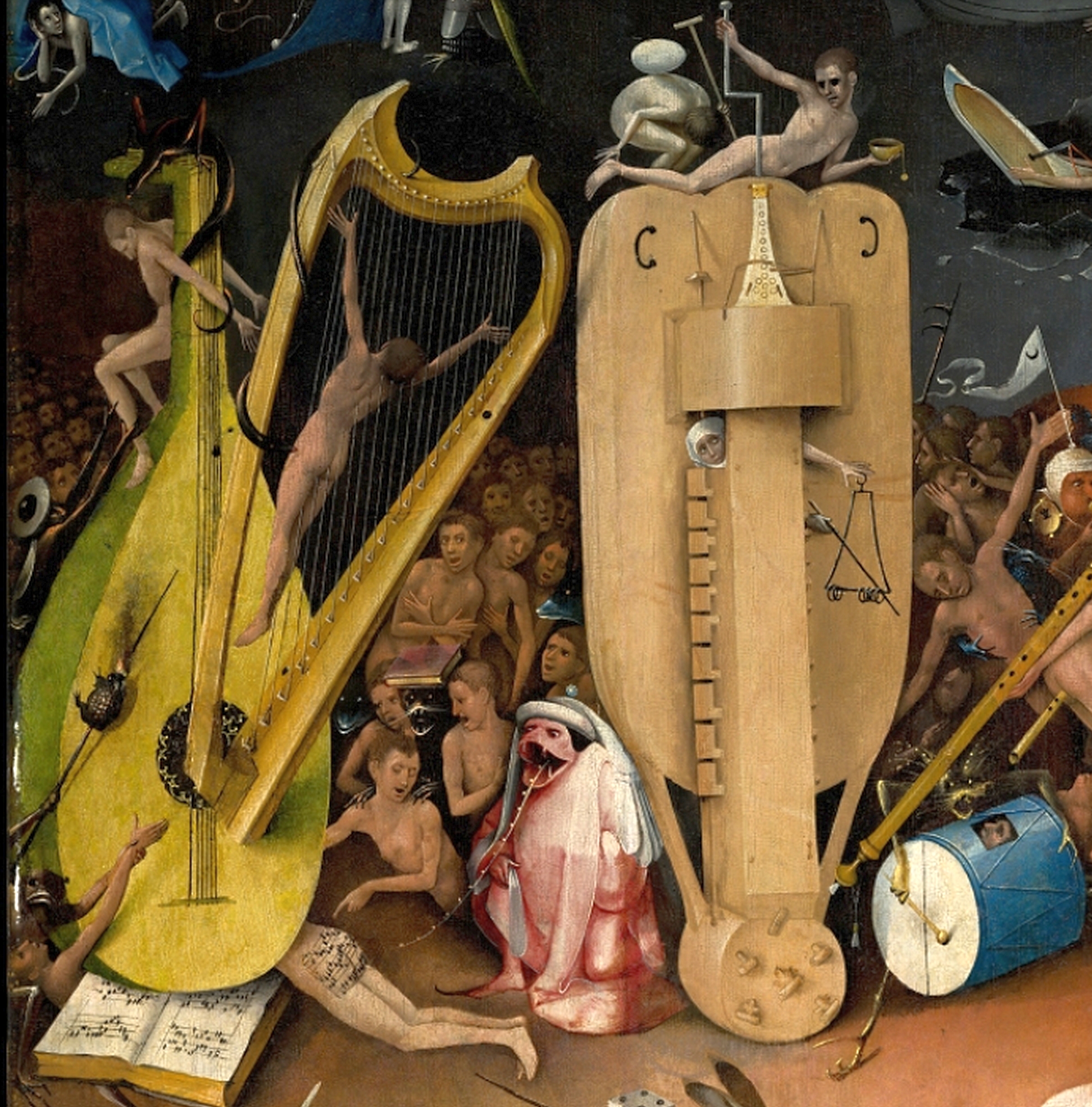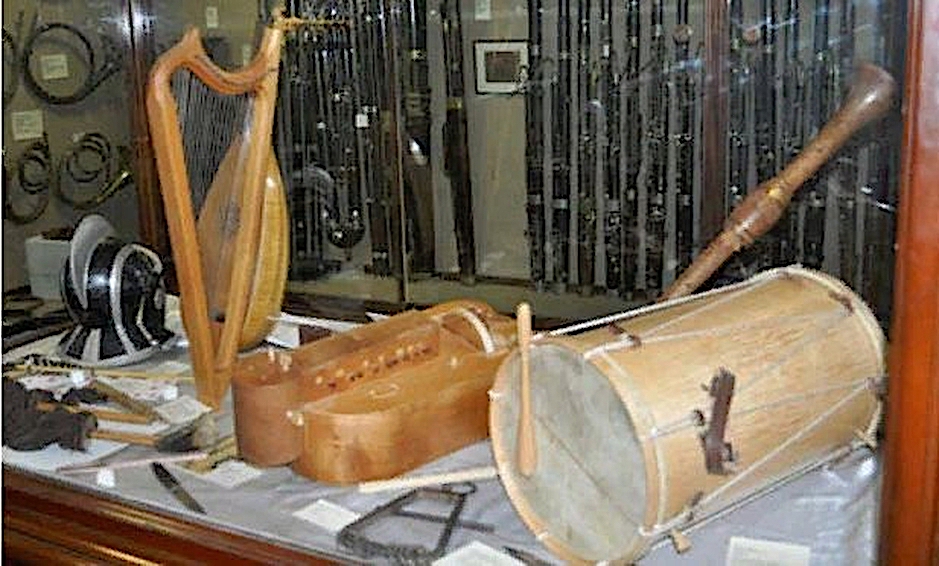
Welcome to The Garden of Earthly Delights.
You’ll find no angelic strings here.
Those are reserved for first class citizens whose virtuous lives earned them passage to the uppermost heights.
Down below, stringed instruments produce the most hellish sort of cacophony, a fitting accompaniment for the horn whose bell is befouled with the arm of a tortured soul.
How do we know that’s what they sounded like?
A group of musicologists, craftspeople and academics from the Bate Collection of Musical Instruments at the University of Oxford, took it upon themselves to actually build the instruments depicted in Hieronymus Bosch’s action-packed triptych—the hell harp, the violated lute, the grossly oversized hurdy-gurdy…
…And then they played them.

Let us hope they stopped shy of shoving flutes up their bums. (Such a placement might produce a sound, but not from the flute’s golden throat).
The Bosch experiment added ten more instruments to the museum’s already impressive, over-1000-strong collection of woodwinds, percussion, and brass, many from the studios of esteemed makers, some dating all the way back to the Renaissance.
Unfortunately, the new additions don’t sound very good. “Horrible” and “painful” are among the adjectives the Bate Collection manager Andrew Lamb uses to describe the aural fruits of his team’s months-long labors.
Might we assume Bosch would have wanted it that way?
Brandon McWilliams, the wag behind Bosch’s wildly enthusiastic, f‑bomb-laced review of thrash metal band Slayer’s 1986 Reign in Blood album, would surely say yes, as would
Alden and Cali Hackmann, North American hurdy-gurdy makers, who note that Bosch’s painterly desecrations were not limited to their personal favorite instrument:
Bosch and his contemporaries viewed music as sinful, associating it with other sins of the flesh and spirit. A number of other instruments are also depicted: a harp, a drum, a shawm, a recorder, and the metal triangle being played by the woman (a nun, perhaps) who is apparently imprisoned in the keybox of the instrument. The hurdy-gurdy was also associated with beggars, who were often blind. The man turning the crank is holding a begging bowl in his other hand. Hanging from the bowl is a metal seal on a ribbon, called a “gaberlunzie.” This was a license to beg in a particular town on a particular day, granted by the nobility. Soldiers who were blinded or maimed in their lord’s service might be given a gaberlunzie in recompense.
To the best of our knowledge, no gaberfunzies were granted, nor any sinners eternally damned, in the Bate Collection’s caper. According to manager Lamb, expanding the boundaries of music education was recompense enough, well worth the temporary affront to tender ears.
Related Content:
The Hieronymus Bosch Demon Bird Was Spotted Riding the New York City Subway the Other Day…
Ayun Halliday is an author, illustrator, theater maker and Chief Primatologist of the East Village Inky zine. See her onstage in New York City tonight as host of Theater of the Apes book-based variety show, Necromancers of the Public Domain. Follow her @AyunHalliday.


Fascinating! But where can we listen to the performance(s)?
It’s Hell, so yes, they likely would have taken it the extra-step and played the flute up someone’s bum, right before they shoved a pineapple in there for good-measure!
Hahaha, what nonsense!
“Bosch and his contemporaries viewed music as sinful, associating it with other sins of the flesh and spirit.” Really crazy & historically false.
I can’t find any performances, but here at least is an article with a photo of the recreations:
https://www.theguardian.com/music/2010/nov/07/sam-leith-shocking-news-oxford
Just for completeness sake
https://www.youtube.com/watch?v=OnrICy3Bc2U
The music